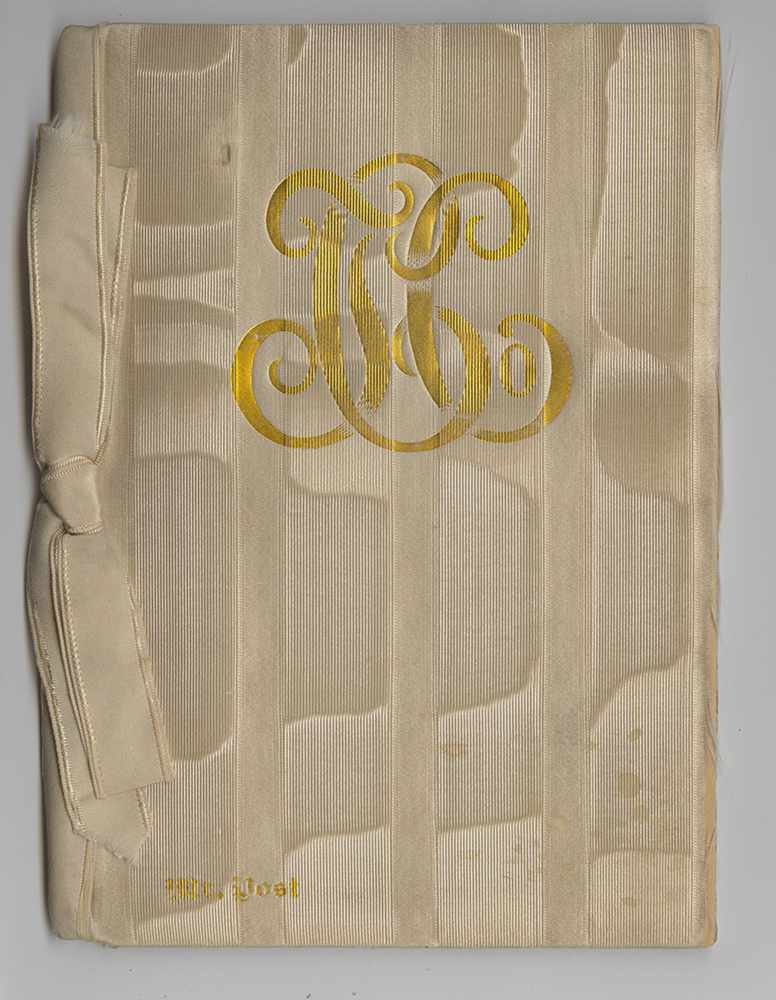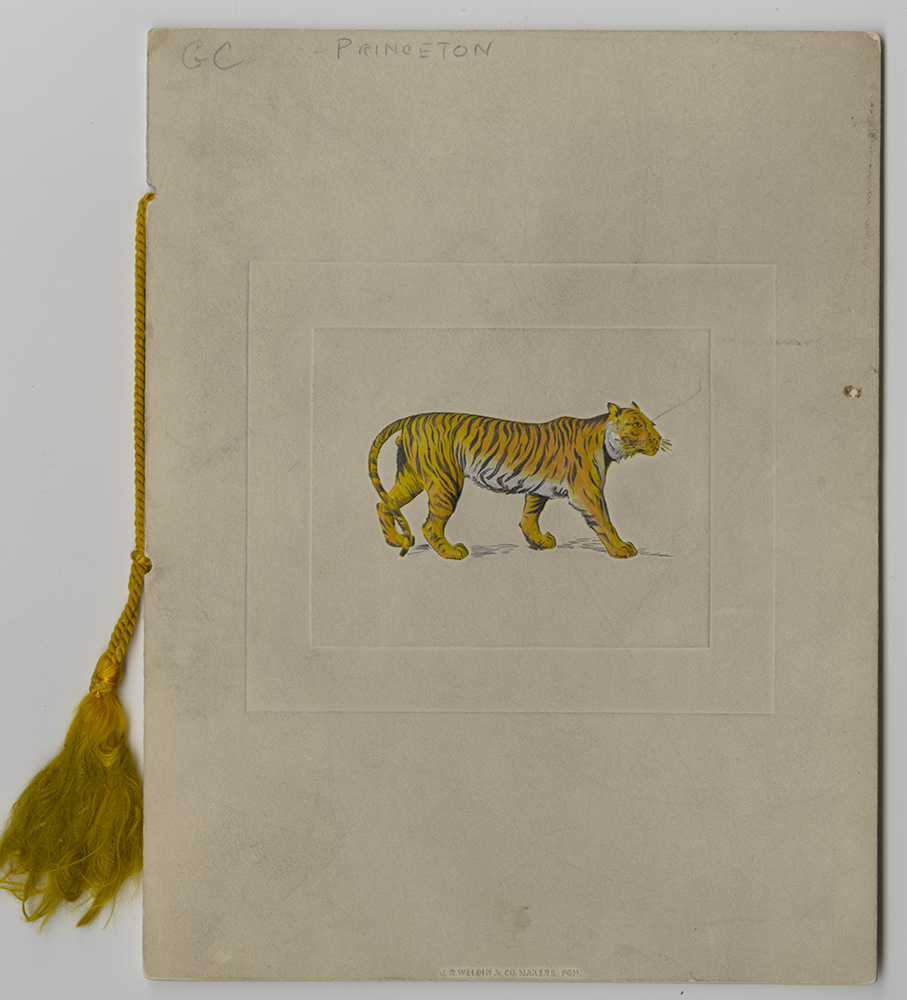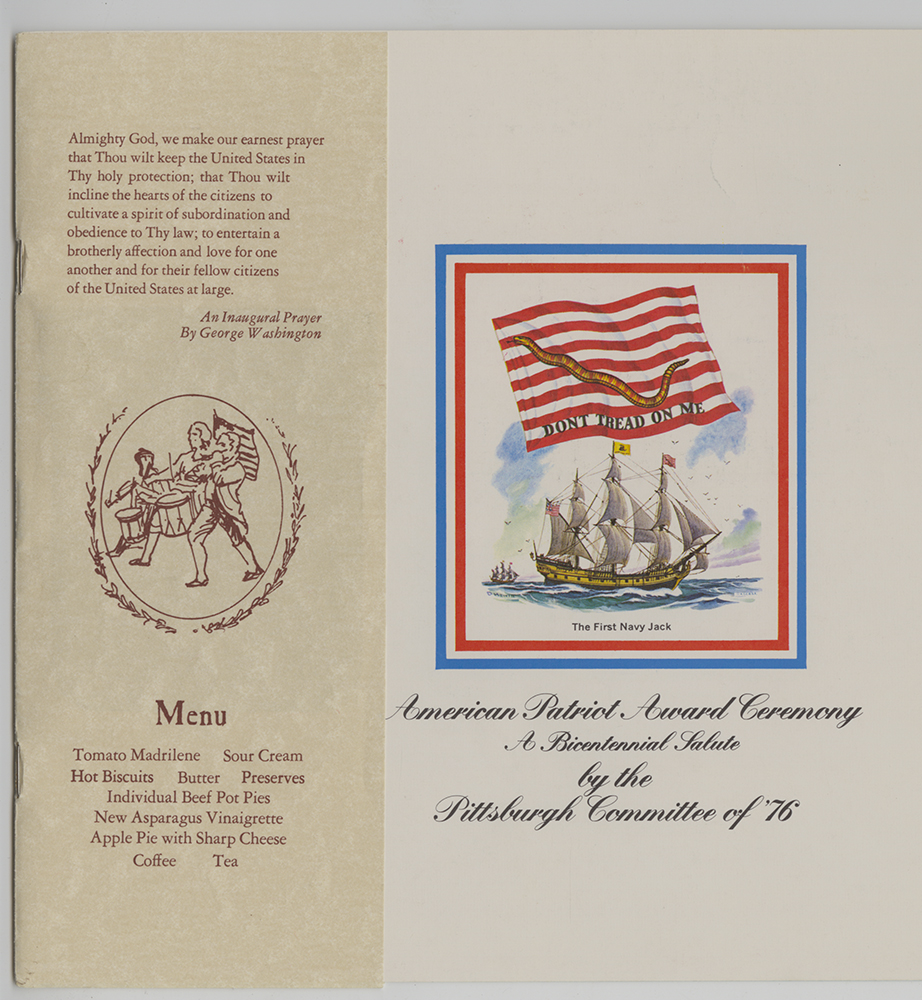Even before reading the text on one small document, the three satiny bows binding its pages — one red, one white, one blue — suggest that its message might be patriotic. Indeed, the graceful script announces, “Luncheon in honor of The President of the United States given by Henry Clay Frick on Friday, the fourth of July One thousand, nine hundred and two at Clayton.” The only other marking on this front page is a stylish gold monogram made from the initials H, C, and F.
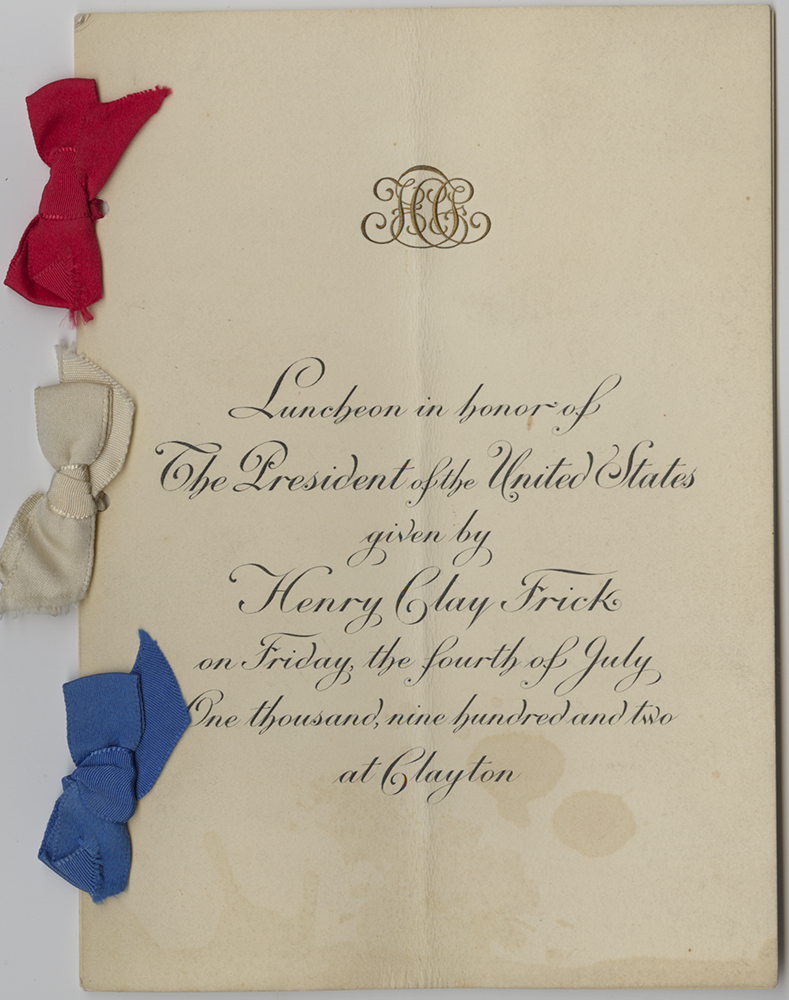
Inside is a menu for a sumptuous Independence Day luncheon. This feast begins and ends with still-popular summer choices — melons to begin and vanilla ice cream, strawberries, cake, and fruit for dessert. But the six offerings in-between speak of a different dining era: sweetbreads (neither bread nor sweet, but organ meats popular for special meals in the late 19th and early 20th centuries), along with salmon, filet chateaubriand, and roast duck. Wine is included for four of the courses — sauternes with the melons, sherry with consommé, Pommery Sec champagne with salmon, and claret for the roast duck.
Being in the presence of this tangible remnant from life over a century ago can inspire both inquiry and imagination. Those of us not thoroughly familiar with presidential timelines might first check who was president in 1902 (President Theodore Roosevelt, still in the first year of his term after President McKinley’s assassination). We might get curious about the politics of this presidential visit, wondering why Pittsburgh was Roosevelt’s setting to celebrate his first Fourth of July in office. Or noticing that the luncheon took place at Clayton, Frick’s home in Pittsburgh’s East End, might get us wondering about the guest list for this private gathering or the nature of the Frick-Roosevelt relationship at the time.
The menu’s food details also spark inquiry: its attention to a condiment in “salmon, mayonnaise” might generate interest in mayonnaise history, for example, or prompt a search for salmon recipes with a mayonnaise glaze. Or the consideration that this private luncheon probably wasn’t the president’s only holiday activity might lead to researching Roosevelt’s schedule or the city’s preparations for this presidential visit or eyewitness accounts. We might even be drawn to another menu available at the Heinz History Center’s Detre Library & Archives. This one is for a banquet honoring Roosevelt that evening at Oakland’s Hotel Schenley. This interaction with an artifact enlivens our thinking about life during another time and makes history feel more immediate.
The Detre Library & Archives’ collections include menus for political, social, religious, corporate, and sports celebrations from 1868 through 2012, with the bulk occurring before 1940. Each menu is distinctive. Some are opulent presentations, with silken covers, ribbon or corded ties, and personalized embossing of a guest’s name; others, for less formal affairs, are on thinner stock with limited color and basic typography. Some appear in small booklets, which may also contain lists of toast-givers or music the band will play, song lyrics, photographs, sketches, or quotations important to the hosting organization.
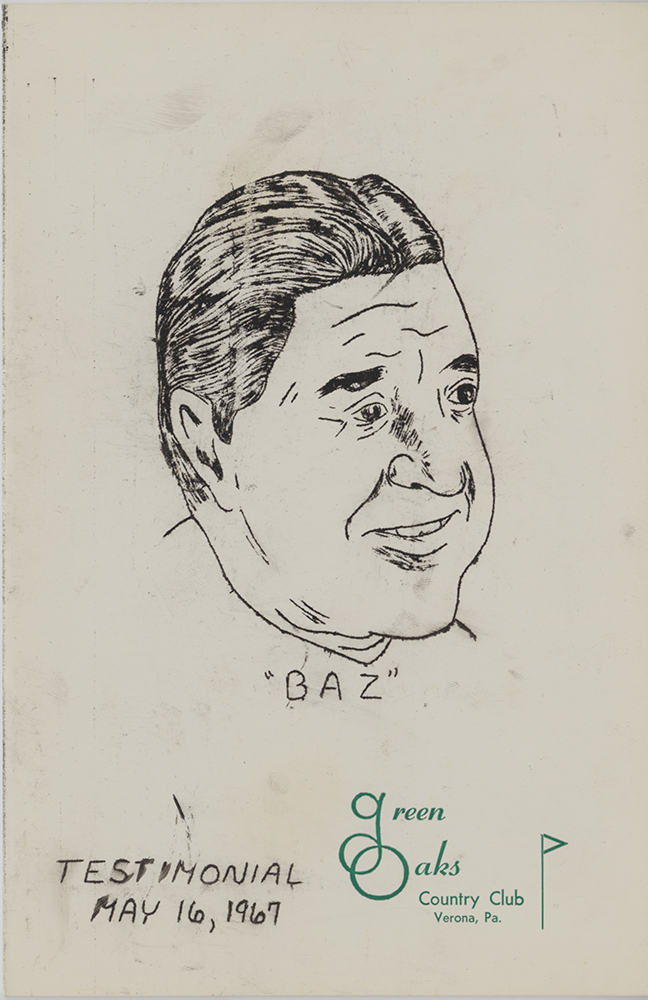
For a testimonial on May 16, 1967, the menu is printed on glossy paper pasted to lightweight parchment. A simple line-drawing portrait labeled “Baz” dominates the front, with a small logo for Green Oaks Country Club in Verona tucked into a lower corner.
Inside is an even more simple sketch of a trophy labeled “Pittsburgh Hornets 1966-67” and a dinner menu, written in French, featuring “Filet de boeuf, roti” and just one wine. This artifact is hockey history and the honored “Baz” was Aldege Bastien, the Hornets’ record-breaking goalie and later their manager and coach. During the 1966-67 season, Bastien had coached the team to their third Calder Cup Championship, but the celebration was also a farewell. The minor league AHL Hornets were being replaced by a new franchise for a local NHL team — the Pittsburgh Penguins.
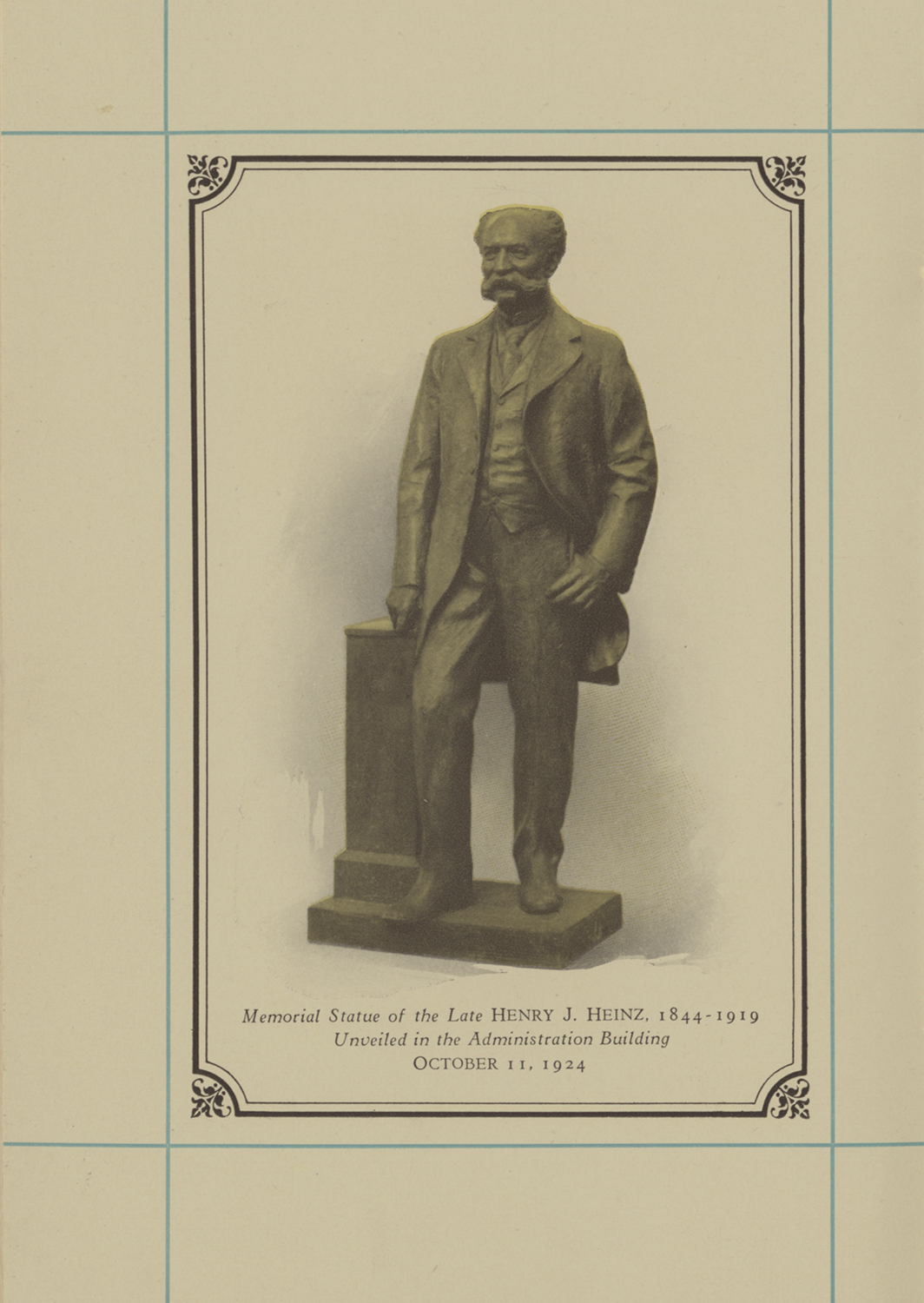
in booklet for Founder’s Day banquet, October 11, 1924. Michael A. Bennett Banquet Menu, H.J. Heinz Co. 1924. 1994.023, Detre Library & Archives at the Heinz History Center.
Teamwork of a different kind was celebrated in 1924 at an H. J. Heinz Company banquet “commemorating fifty-five years of mutual good will between employer and employee.” A small beige ten-page booklet informs us that the same meal is being served simultaneously at 62 locations in the U.S., Canada, and England to “practically all of the Company’s 10,326 employees throughout the world.” Fittingly, the menu begins with Heinz Cream of Tomato soup and includes heart of lettuce salad accented by Heinz mayonnaise. The booklet also notes that all of the banquet’s addresses — including President Calvin Coolidge’s toast from the White House — will be “heard in all places at the one time” via radio. (Research reveals that audio from Pittsburgh’s KDKA was transmitted to other stations through Westinghouse’s new shortwave relay system.) A photograph of a life-size statue of the late founder, Henry J. Heinz, appears as well with the information that this bronze statue was created through voluntary donations from all employees and unveiled in Pittsburgh that day.
To facilitate exploration of our varied special-events menus, we’re introducing an online index. Whether you’re interested in learning about regional history, investigating celebratory food trends over time, or basing your next theme party on an historic menu, this index will help you get started. We also encourage you to check your own memorabilia for special events menus you might want to add to our collection. Please use this form to contact us about possible donations.
Rosemary Kovacs is a volunteer archivist at the Detre Library & Archives at the Heinz History Center.
